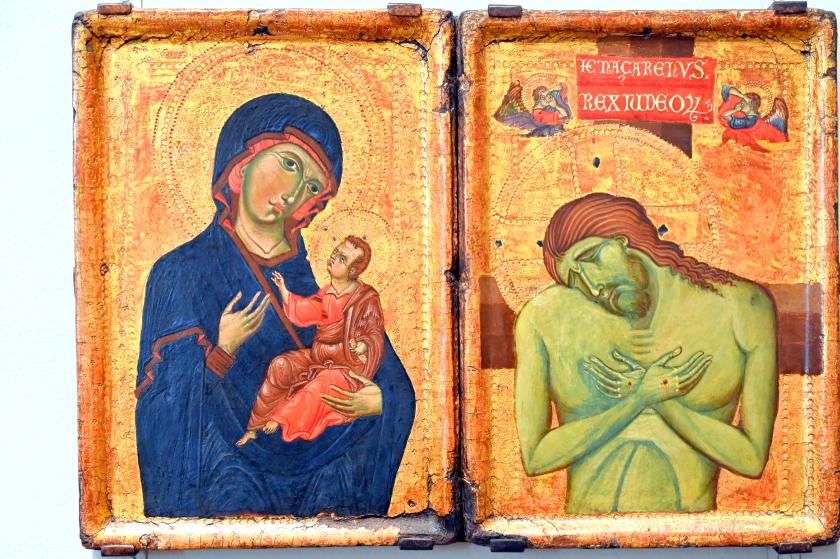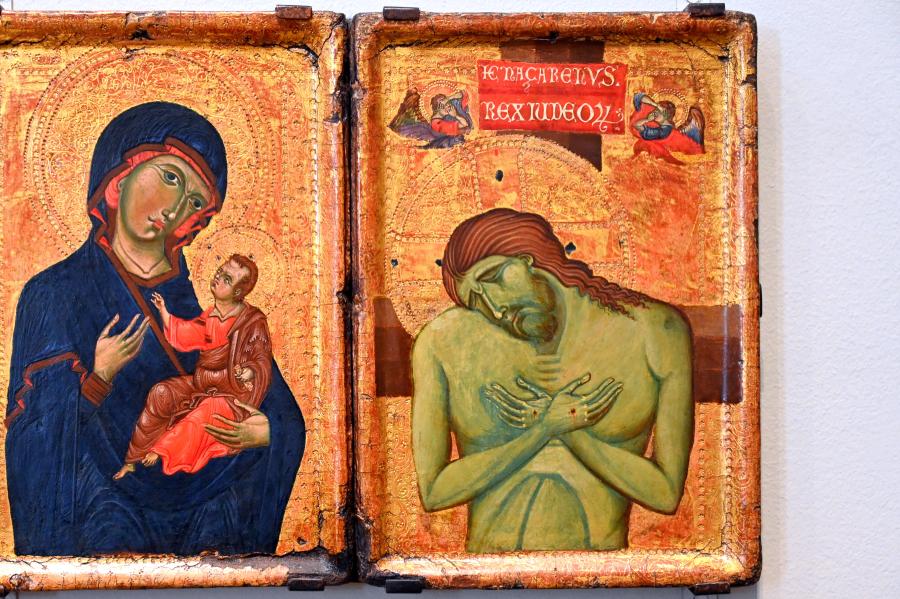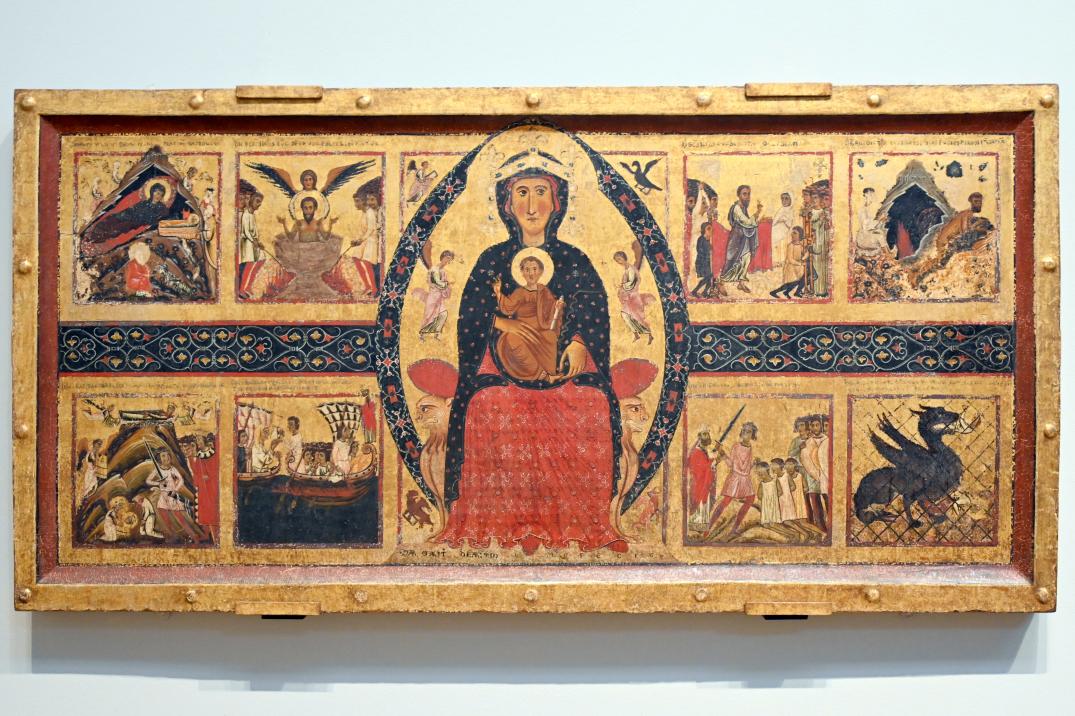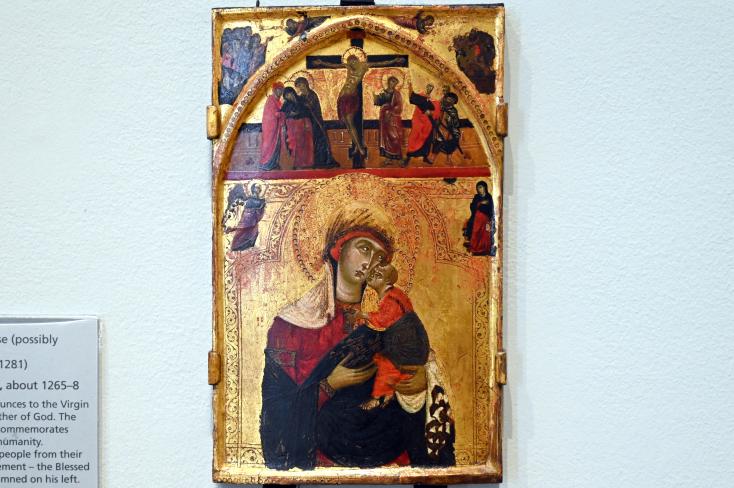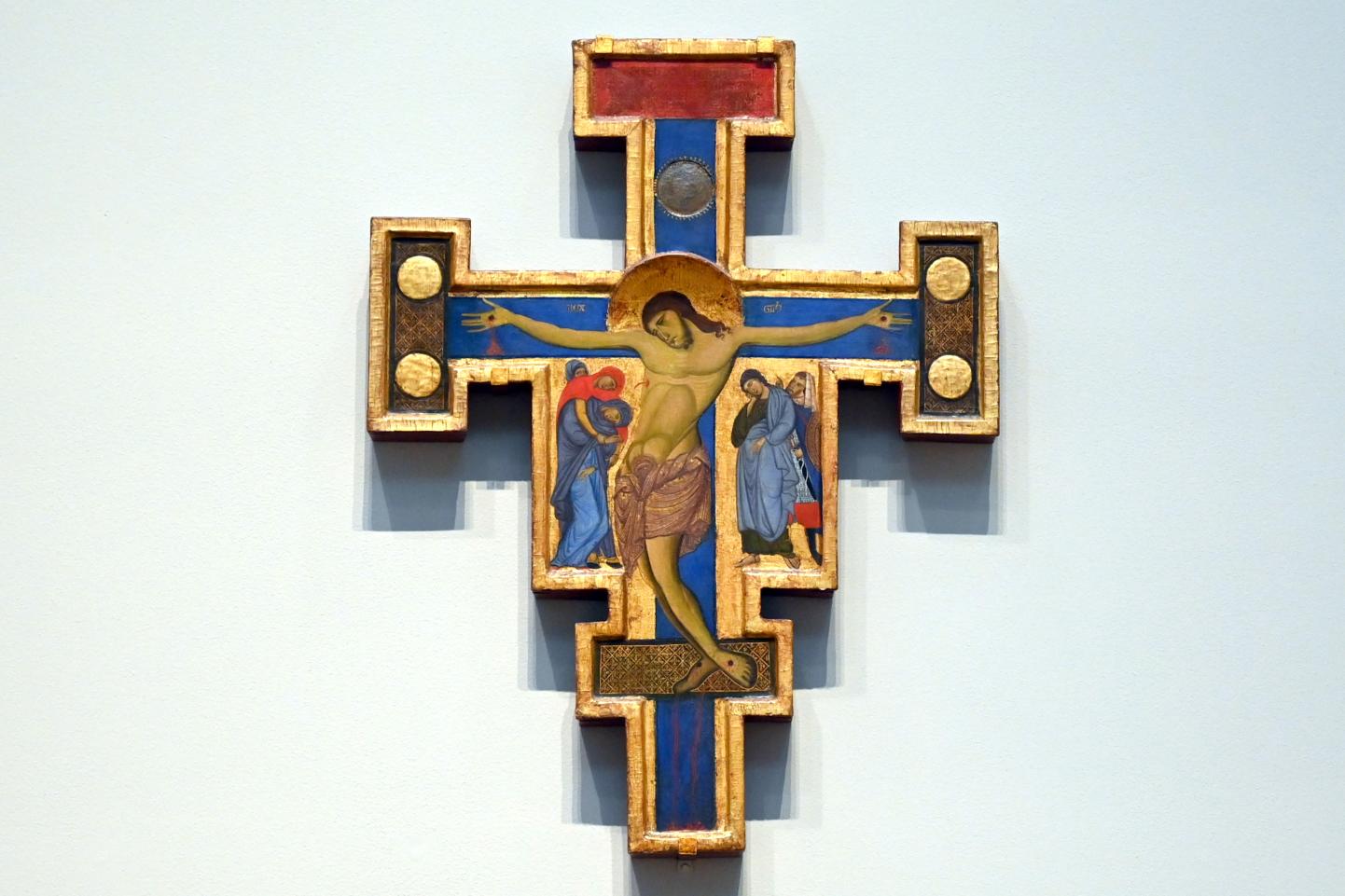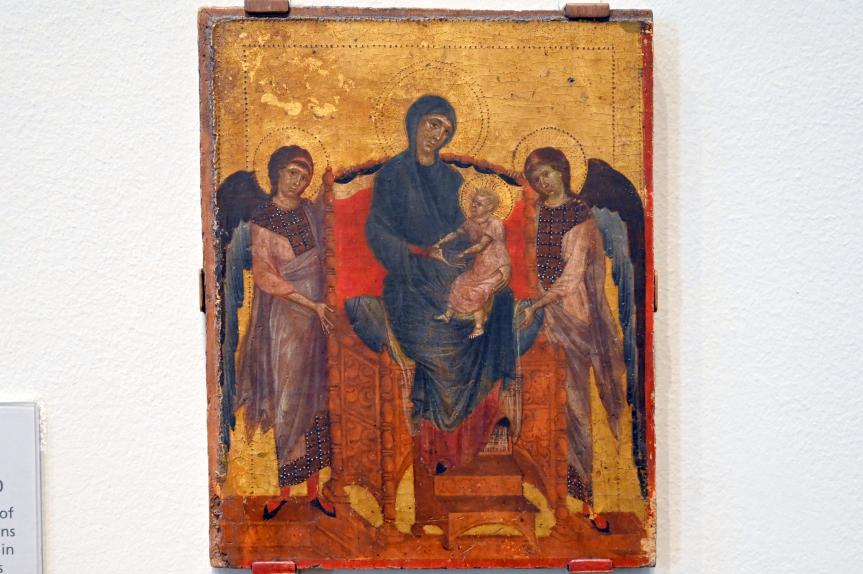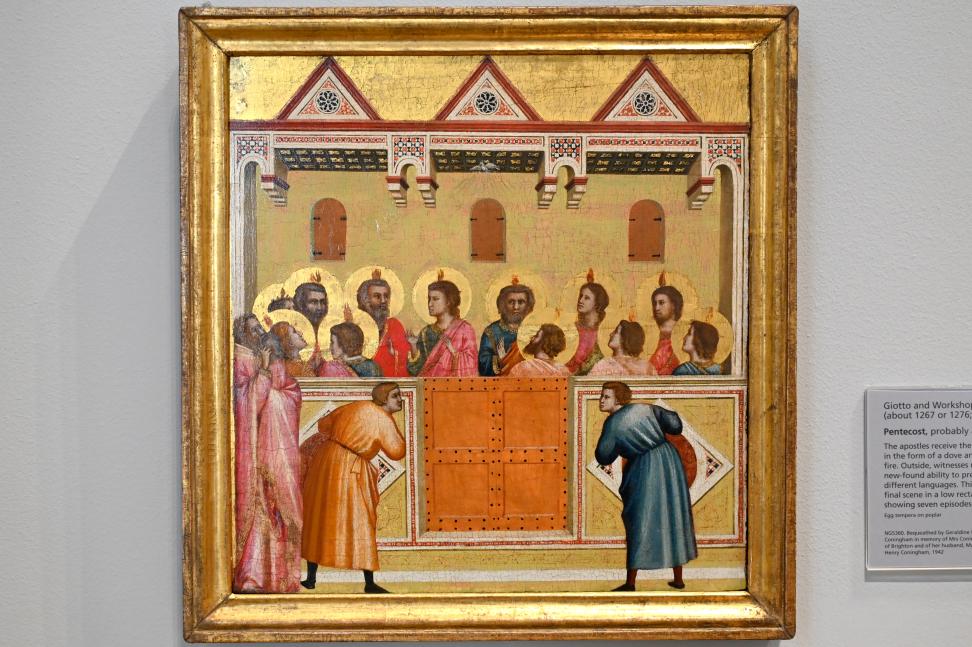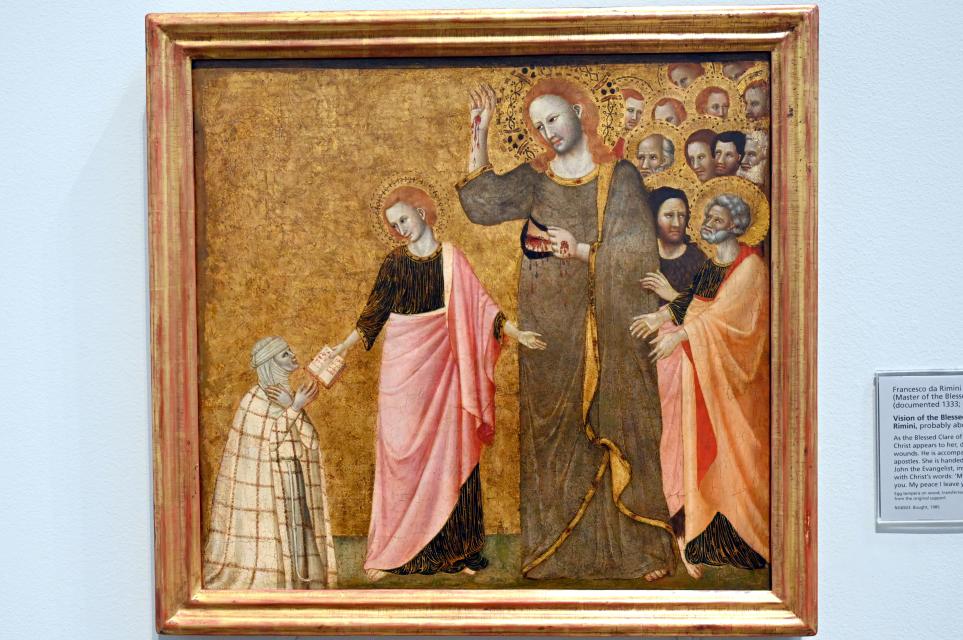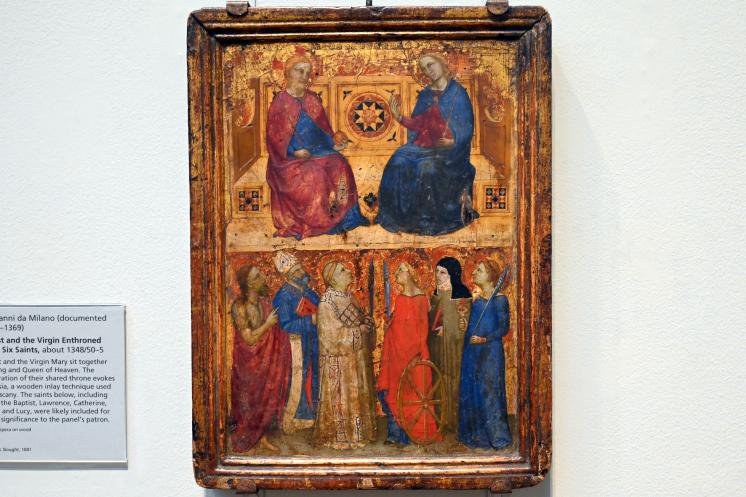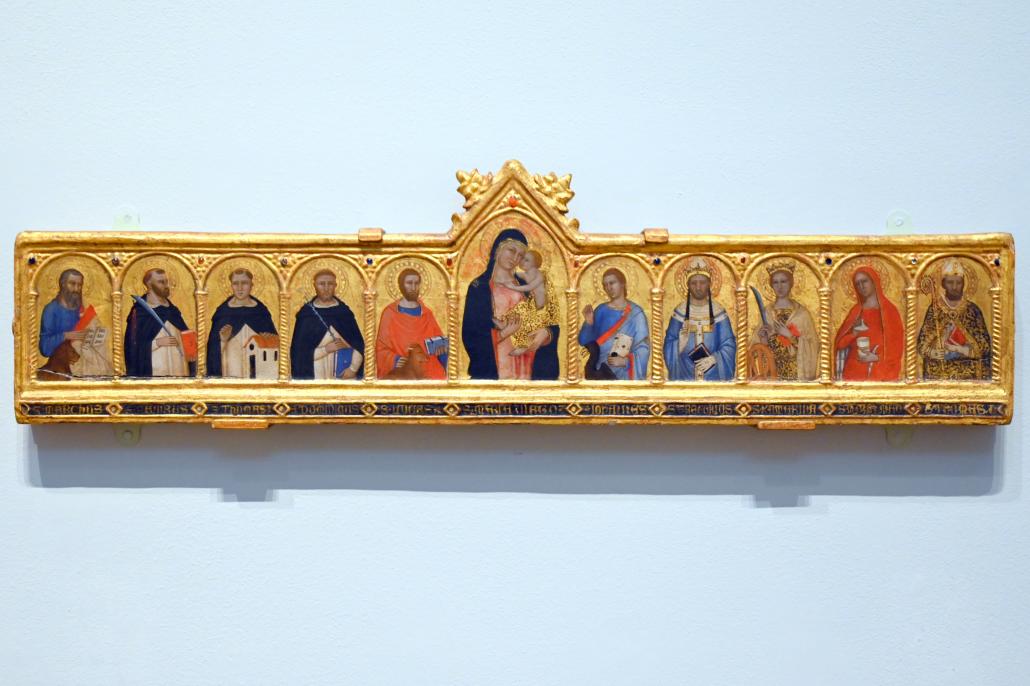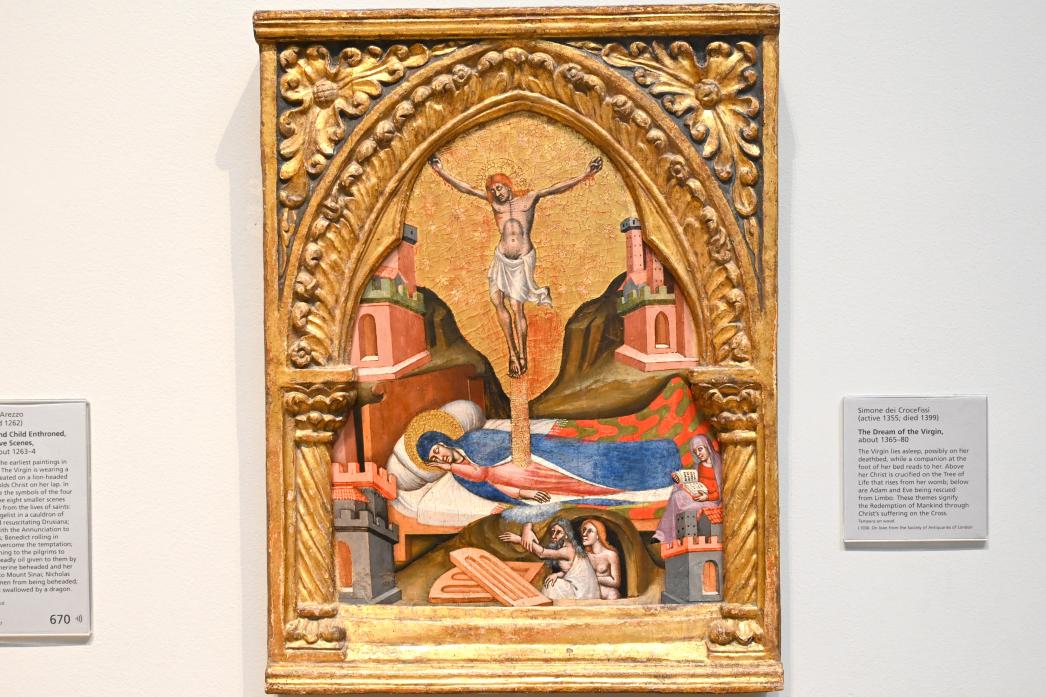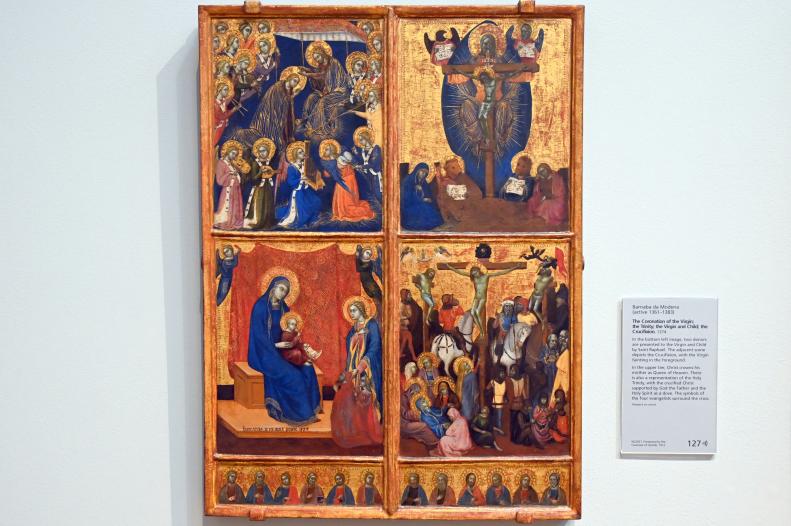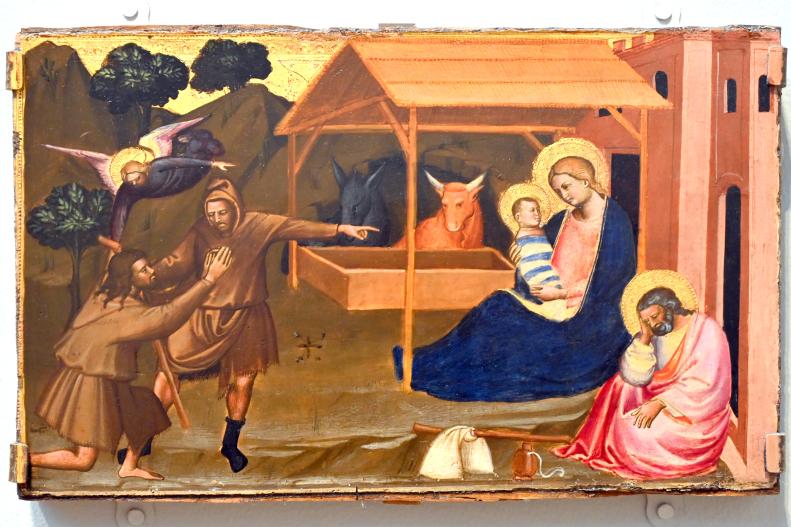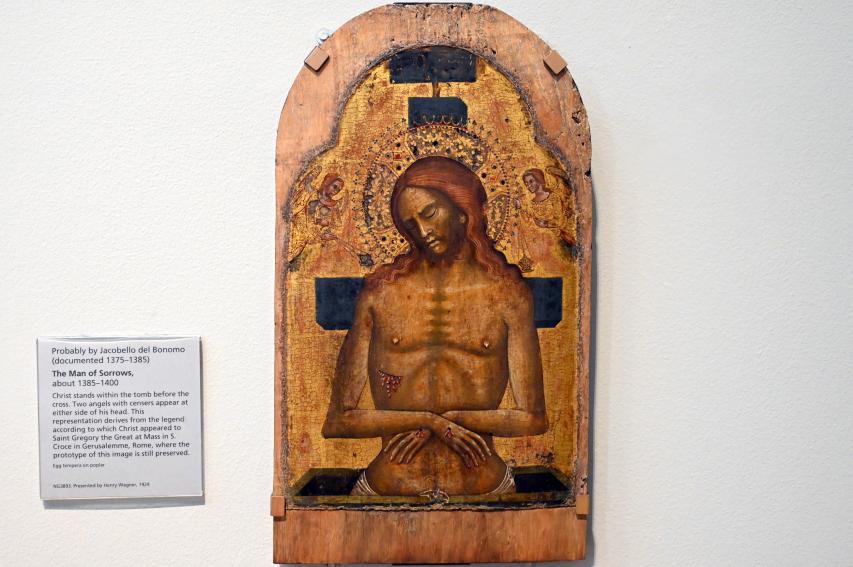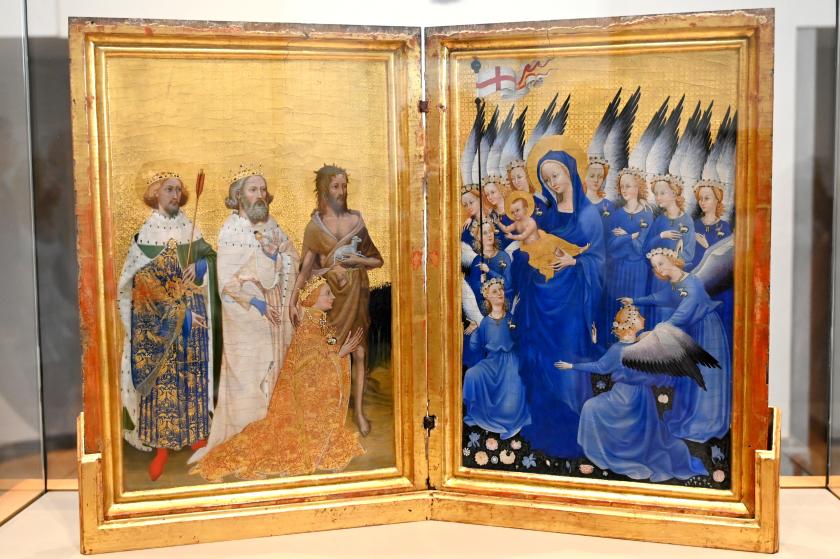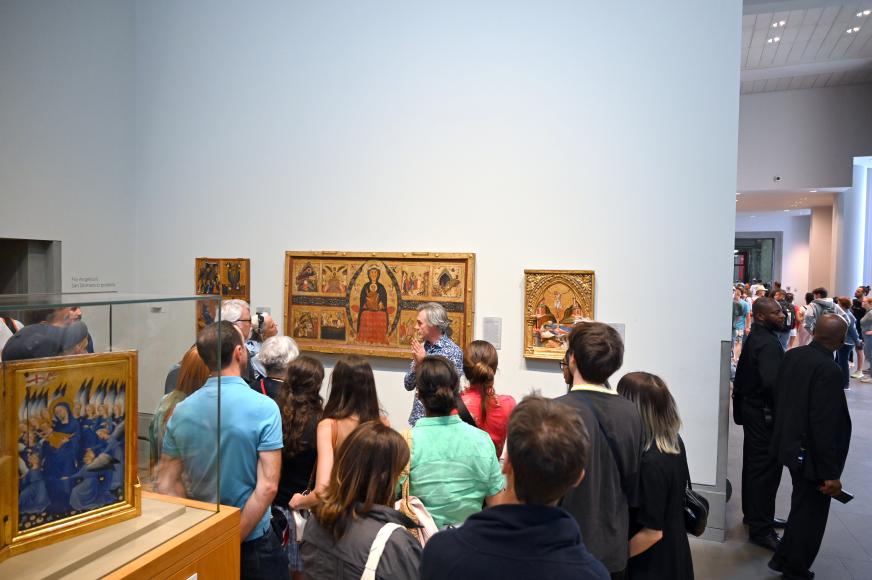Position London, National Gallery
Bedeutende Künstler in London, National Gallery, Saal 51 (1257–1385)
Künstler in London, National Gallery, Saal 51
Andrea di Bonaiuto
1319 Florenz - 1377 Florenz
Barnaba da Modena (Barnaba Agocchiari)
um 1328 Modena - nach 1386
Cimabue
1240 Florenz - 1302 Pisa
Francesco da Rimini
✝1348
Giotto di Bondone (Giotto)
1267 Vespignano - 1337 Florenz
Giotto di Bondone (Nachfolger)
1267 Vespignano - 1337 Florenz
Giovanni da Milano
um 1325/30 Caversaccio - um 1370
Jacobello di Bonomo
dokumentiert 1375 - 1385
Margaritone d’Arezzo
um 1240 - 1290
Meister der Clarissentafel
dokumentiert 1274 - 1281
Meister der Franziskanerkreuze
aktiv um 1250 - 1269
Simone dei Crocifissi (Simone di Filippo Benvenuti)
um 1330 Bologna - 1399 Bologna
London, National Gallery, Saal 51 (Inventar-Nr. NG6572)
um 1255–1260
London, National Gallery, Saal 51 (Inventar-Nr. NG6573)
um 1255–1260
London, National Gallery, Saal 51 (Inventar-Nr. NG564)
um 1263–1264
London, National Gallery, Saal 51 (Inventar-Nr. NG6571)
um 1265–1268
London, National Gallery, Saal 51 (Inventar-Nr. NG6361)
um 1265–1270
London, National Gallery, Saal 51 (Inventar-Nr. NG6583)
um 1265–1280
London, National Gallery, Saal 51 (Inventar-Nr. NG5360)
um 1310–1318
London, National Gallery, Saal 51 (Inventar-Nr. NG6503)
um 1333–1340
London, National Gallery, Saal 51 (Inventar-Nr. NG3895)
um 1330–1350
Jetzt: London, National Gallery, Saal 51 (Inventar-Nr. NG5115)
um 1365–1370
London, National Gallery, Saal 51 (Inventar-Nr. L668)
1383
London, National Gallery, Saal 51 (Inventar-Nr. NG3893)
um 1385–1400
London, National Gallery, Saal 51
Herkunftsorte
